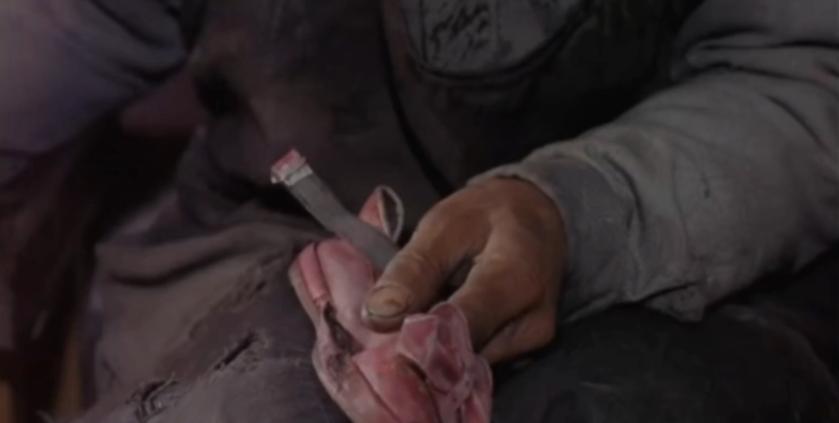Little Shoes (also known as "Children of Heaven") is an Iranian film directed by Majid Majidi that tells the story of a pair of siblings Ali and Sarah, and a pair of lost shoes. The film is a fairy tale dedicated to adults that evokes memories of childhood. Next I will briefly analyze the footage in the movie.
First, long lens
In the film, the director makes extensive use of the long-shot shooting method, so as to show the warm and simple life scene in front of the audience and arouse the emotional resonance of the audience. For example, at the beginning of the film, the director uses a long shot to show the audience a scene of an old hand repairing a pair of worn-out shoes, allowing the audience to be immersed in the scene and hinting at the theme of the film.

2. Close-up shots
In the film, close-up shots are often used to show the psychology of the characters. A close-up shot refers to a shot of the face of a portrait in a movie, a certain part of the human body, or a detail of an object. For example, the first time Sarah wore Ali's old sneakers to study, when the students lined up in physical education class to measure the long jump, the director used a slow moving close-up to show the children's various shoes. When the camera moves to Sarah's shoes, although there is no facial shot, sarah's awkwardness is shown between the movement of Sarah's retreat and the contrast of the shoes.
In addition, the shoe repair scene at the beginning of the film is also a close-up, as well as the shoes being taken away by the garbage pickers, the brothers and sisters talking with paper and pencil, the broken sneakers being blocked by the net in the water, and finally the use of close-ups of the prize shoes.
The use of close-up shots again and again separates the subject from the complicated environmental background, emphasizing the main body of the picture.
Third, subjective shots
In the process of the father and son riding bicycles on the slope, the car can not stop and finally hit the tree, the subjective lens is basically used, bringing the audience the first perspective of the characters in the film, so that the tension can make the audience feel better, so that the audience has an immersive and empathetic effect.
Fourth, montage
1. Contrast montages
The scene of ali and the master's child playing with the scene formed a contrast montage, and there was also a contrast between the rich and the poor, which produced mutual emphasis and conflict, reflecting the gap between the rich and the poor in society.
2. Parallel montages
The father is spraying trees to water the flowers, and Ali and the master's children are playing between a set of parallel montages, making the two set off and contrast.
3. Metaphorical montage
At the end of the film, the camera quickly skips the new shoes his father buys for the children, using metaphorical montages to suggest that although Ali did not fulfill this wish, his father has helped him achieve it, which is more meaningful than directly filming the dialogue.
But in fact, the most moving part of this movie is its simple warmth. Whether it is Ali, who runs hard to win a new pair of shoes for her sister, Sarah, who changes her shoes to go to school by sticking to her brother's agreement, or her father, who buys new shoes for her children despite the family's lack of wealth, they have not lost love because of poverty, so that our hearts watching this movie also blossom into a warm flower.